
The Sardarni Kuljit Kaur Bindra Chair in Sikh Studies
with the Sardarni Harbans Kaur Chair in Sikh Musicology invite you to
Gurū Nānak's Ek-Anek Vision:
Beyond Relativist & Plural Diversities of the Musical Word
International conference celebrating Gurū Nānak's 550th Birth Anniversary
THURSDAY October 10
Samagan (Concert) * 7:30 – 9 p.m.
Gurū Nānak's Musical Word sung from Sikh Sacred Scripture,
a performance by Bhai Baldeep Singh (India)
FRIDAY, October 11
Keynote Speech: 9 – 10 a.m.
Presentations: 10:30 a.m. – 5:30 p.m.
Leo A. Guthart Cultural Center Theater
Samagan (Concert) * 7:30 – 9 p.m.
Saint Kabīr's Musical Word sung from Sikh Sacred Scripture,
a performance by Prahlad Tipanya (India)
SATURDAY, October 12
Presentations: 9 a.m. – 5 p.m.
Leo A. Guthart Cultural Center Theater
Samagan (Concert) * 7 – 8:30 p.m.
Saint Farīd's Musical Word sung from Sikh Sacred Scripture, a performance by Dhruv Sangari (India)
*Location for all concerts:
Helene Fortunoff Theater, Monroe Hall
All the events are in collaboration with the Hofstra Cultural Center free and open to the public
Themes and Rationale of the Conference
Starting with the analysis of Bhakti, Sufi and Sikh voices, as critically included in the Sikh scriptures, this event aims to explore Gurū Nānak’s pluriversal vision and the experiential knowledge embodied (Hess 2015), and preserved, in the form of sung poetry through the Gurbānī kīrtan paramparā.
The Gur-Sikh texts are composed within Gurū Nānak’s vision of Ek-Anek as a lived reality: different people, languages, cultures, and traditions all form legitimate expressions and avenues through which truth can occur. The Sikh Gurūs heard the voices of the other as a song echoing pluriversal values (Bhogal 2019), forming them into melodies and compositions that could express the complexity of the truth as a heterogenous but coherent sonic form. Rather than an ideological and monolingual truth to convert the other, the Gurū Granth Sāhib’s musical form calls for a resonance within and between traditions. The poetic and musical repertoire of Sikh “literature” not only stands as an example for its critically inclusive “interreligious” foundation but also represents a precious testimony of medieval and early-modern devotional song-forms and rāgas that musicologists believe to be extinct (Schofield 2018).
This conference aims to critically examine the ‘uncolonised’ and overlooked musical heritage of the Gurbānī kīrtan paramparā, as transmitted to this day in streams that resisted post-Partition homologation (Cassio and Khalsa 2019). Through the Gur-Sikh aural memory, early accounts of Sufi and Bhakti poetries have been preserved in written and oral forms which (as in the case of the Kabir bānī) are credited for being the closest – and hence the most ‘authentic’ – sources available today (Callewaert 2000).
Just as the Gurū Granth Sāhib functions as key reference in these vernacular literatures, likewise, from the early traditions the Gurbānī musical heritage retained unexplored tracks of rāgas, compositions, and song-forms that are relevant sources of historical and musicological information. Considered for a long time as a peripheral musical expression (Powers 1980) and as regional variant of mainstream genres (Slawek 1996; Sanyal and Widdess 2004; Beck 2010), the Gurbānī kīrtan paramparā carries an alternative narrative that not only challenges historical accounts based on colonially-derived sources and binary paradigms (such as folk–classical, oral–written, subaltern–dominant), but also defies colonial universalism. Thus, the neglected and misunderstood evidence of the Gurū Granth Sāhib urges scholars to rethink the role and impact of the musical Word according to Gurū Nānak’s Ek-Anek vision that, based on pluriversal thinking, includes marginalinzed voices as equally valid. Central in this debate are the notions of ‘literacy’ and aural-oral knowledge, reassessed through decolonial lenses (Stoller 2007; Ochoa Gautier 2014)
Relevant examples of this kind are the (dhru)pad-based kīrtan forms (such as Gurbānī, Havelī and Padāvalī), that will be analyzed – by contrast and similarities – with the Darbāri dhrupad traditions celebrated in written music literature. Although particular attention will be given to these themes, the conference is not limited to these topics, and we are encouraging scholars to discuss broader issues, such as:
- Devotional songs as oral narratives of the Self and the Other;
- Devotional music literature and multidirectional memories (Rothberg 2009);
- Interlaced voices of poets and saints from Sindh, Panjab, Madhya Pradesh, and Bengal;
- Eurocentred notion of (music) history versus alternative indigenous narratives;
- Critical assessments of Indic & colonial sources on devotional music-s in South Asia;
- The impact of national cultural policies on the transmission of traditional repertoires;
- Oral and written sources that survived colonial and nationalist narratives.
The Gurū Granth Sāhib through a Decolonial Frame
At the outset, this conference seeks to counter the reduction of Gurū Nānak’s vision of Ek-Anek (“One–Many”; lit. “one–not one”) to either a harbinger of modern relativism or an exemplar of a universalist theology. Indeed, universalism and relativism are recognized here as aspects of a single discourse wherein the frames of “multiculturalism” and “religion” are structures born of the colonial encounter in which Christian nations mediated and negated the differences of indigenous traditions by an inclusive rhetoric of control and assimilation. Mignolo has argued that ‘modernity occluded the pluriversal under the persuasive discourse of the universal’ (2003: 435), such that dominant groups (whether Christian Whites or Hindu Brahmins) ‘found themselves enjoying the epistemic privilege of classifying without being classified’ (in Dabashi 2015: xiv). That is, European universalism (i.e., the self-declared superiority of modern rationalism, western progress and Christian ethics) was masked, and thereby preserved, by the rhetoric of universalism on the one hand (“God”, “democracy”, “reason”) and pluralism on the other (“tolerance”, “multiculturalism”, “freedom”). This is nowhere more clearly illustrated than through the “invention of World religions” (Masuzawa 2005). That the dominant power may choose to tolerate difference ensures that it itself remains undisturbed in its singular command of the power of enunciation and representation. To this day, Article 25 (2)(b) of the Indian secular constitution stipulates that “the reference to Hindus shall be construed as including a reference to persons professing the Sikh, Jain or Buddhist religion.”
Dispensing with European and Indic vertical notions of cosmic, linguistic and ritual order, Gurū Nānak’s Ek-Anek is both horizontallyand temporallyfigured, and as such is inclusive of the other. When Gurū Nānak “sees no other” (avar-na-dūjā) this is not to say that all are one unified whole without remainder. Rather it is a move to resist, firstly, the demarcation of a center; and secondly, the casting out of others beyond its periphery (barbarian, mlechha et al). Ek-Anek is radically committed to inclusion; yet it just as radically disavows the politics of assimilation, contra colonial epistemicide and shudraization (Halbfass 1988: 180). It presents a vision of pluriversal heterogeneity.
The pluriversal is horizontal, bottom-up and non-possessable; the universal is vertical and top-down and owned by a dominating group. The pluriversal emphasizes a particular-particular relation of being-with-others as co-constitutive, heterogenous and collaborative; the universal-particular operates through a master-slave relation that demands obedience, mimesis and homogeneity. The former concerns experiential engagement, the latter swings from “tolerance” (left) to “zero tolerance” (right). While the pluriversal is inter-cultural and inter-epistemic, the universal is neither.
Ek-Anek, as Ik-Oankār (the One Sound-Resonance),then exceeds the constraints of language, whether secular or sacred. Rather it requires multiple grammars and vocabularies in order to approach the pluriversal. It is hence why this conference focuses on music, particularly the diversity of the musical traditions included in the Gurū Granth Sāhib, as a way to directly and differently engage with Gurū Nānak’s pluriversal teachings that cannot be named, but only felt, sung and embodied.
The epistemic diversity of Gurū Nānak’s Ek-Anek vision constructed “a world in which other worlds fit”, to borrow the Zapatista motto (Grosfoguel 2012: 99). In this regard the Gurū Granth Sāhib contains what Boaventura de Sousa Santos calls an “ecology of knowledges” (2014: 188). Challenging and reframing the tyranny of abstract universals and singular narrations of truth, Gurū Nānak sought to create a coherent harmony (not a synthesis) of that “ecology of knowledges” as a critical resonance across them. This creative re-reading of traditions transcends any one epistemic structure and lays the foundation for a new particular-particular comparative frame that protects the voice and sovereignty of different communities, for the “communal is by definition pluriversal” (Mignolo 2012: 81). This conference will thus focus on the horizontal, inter-epistemic engagement within the Gurū Granth Sāhib with the aim to retrieve two inter-related and central forms of that experiential coherence: music (rāg) and Word (shabad).
Francesca Cassio, Sardarni Harbans Kaur Chair in Sikh Musicology, Professor in Music
Balbinder Singh Bhogal, Sardarni Kuljit Kaur Bindra Chair in Sikh Studies, Professor in Religion
Bibliography
Beck, Guy L. 2010. “Kīrtan and Bhajan.” In Brill’s Encyclopedia of Hinduism Online, edited by Knut A. Jacobsen, Helene Basu, Angelika Malinar, and Vasudha Narayanan. Consulted online on 29
March 2019. http://doi.org/10.1163/2212-5019_beh_COM_2040060.
Bhogal, Balbinder Singh. 2019. “The Ignored Vision of Guru Nanak’s Multi-Directional Memory,”
International Conference on Guru Nanak’s Philosophy and Legacy, Sri Guru Tegh Bahadur Khalsa
College (University of Delhi), (Feb 22-23)
Callewaert, Winand. 2000. The Millenium Kabir: A Collection of Pad-s. New Delhi: Manohar Publishers and
Distributors
Cassio, Francesca and Khalsa-Baker, Niranjan Kaur. 2019. ‘Singing Dharam: Transmission of Knowledge
in the Sikh Sonic Path.’ In Explorations in Indic Traditions: Beacons of Dharma, edited by Reading
Michael, and Miller Christopher. Lanham: Lexington Books. Forthcoming
Dabashi, Hamid. 2015. Can Non-Europeans Think? London: Zed Books Ltd.
Halbfass, Wilhelm. 1988. India and Europe: An Essay in Understanding. Albany: State University of New York
Press.
Hess, Linda. 2015. Bodies of Song Kabir Oral Traditions and Performative Worlds in North India. Oxford: Oxford
University Press.
Grosfoguel, Ramón. 2012. “Decolonizing Western Uni-versalisms: Decolonial Pluri-versalism from Aimé
Césaire to the Zapatistas”, TRANSMODERNITY: Journal of Peripheral Cultural Production of the Luso- Hispanic World, 1(3), pp.88-104.
Masuzawa, Tomoko. 2005. The Invention of World Religions: or how European Universalism was preserved in the
language of pluralism. Chicago and London: The University of Chicago Press.
Mignolo, Watler. 2003. The Darker Side of the Renaissance: Literarcy, Territoriality, and Colonization, 2nd Edn. Ann
Arbor: The University of Michigan Press.
Mignolo, Watler. 2012. “The Prospect of Harmony the Decolonial view of the world”
http://waltermignolo.com/the-prospect-of-harmony-and-the-decolonial-view-of-the-world/ (accessed July 23, 2019)
Mignolo, W. and Walsh C. 2018. On Decoloniality. Concepts, Analytics, Praxis. Duke University Press.
Ochoa Gautier, Ana María. 2014. Aurality: Listening and Knowledge in Nineteenth-Century Colombia. Durham
and London: Duke University Press.
Powers, Harold. “India, Subcontinent of, I-II.” In Stanley Sadie, ed. The New Grove Dictionary of Music and
Musicians, vol. 9, 69-141. London: Macmillan, 1980.
Rothberg, Michael. 2009. Multidirectional Memory: remembering the holocaust in the Age of Decolonization. California:
Stanford University Press.
Santos, Boaventura de Sousa. 2014. Epistemologies of the South: Justice Against Epistemicide. Boulder and
London:Paradigm Publishers.
Sanyal, Ritwik and Richard Widdess 2004. Dhrupad: Tradition and Performance in Indian Music. Ashgate
Publishers Ltd.
Schofield, Katherine Butler. 2018. “‘Words Without Songs’: the social history of Hindustani songs
collections in India’s Muslim courts c1770-1830”. In Rachel Harris and Martin Stokes, eds., Theory
and Practice in the Music of the Islamic World. London: Routledge.
Slawek, Stephen. 1996. “The Definition of Kīrtan: an historical and Geographical Perspective.” Journal of
Vaisnava Studies 4 (2): 57–113. (Spring 1996): New York: Folk Books.
THURSDAY October 10
Samagan (Concert) * 7:30 – 9 p.m.
Gurū Nānak's Musical Word sung from Sikh Sacred Scripture,
a performance by Bhai Baldeep Singh (India)
FRIDAY, October 11
Samagan (Concert) * 7:30 – 9 p.m.
Saint Kabīr's Musical Word sung from Sikh Sacred Scripture,
a performance by Prahlad Tipanya (India)
SATURDAY, October 12
Samagan (Concert) * 7 – 8:30 p.m.
Saint Farīd's Musical Word sung from Sikh Sacred Scripture, a performance by Dhruv Sangari (India)
*Location for all concerts:
Helene Fortunoff Theater, Monroe Hall
All the events are in collaboration with the Hofstra Cultural Center free and open to the public
CONFERENCE PROGRAM
THURSDAY (10/10)
|
7:00 – 7:30 |
REGISTRATION |
|
7:30 – 9:00 pm |
EVENING SAMAGAM (Concert)* |
FRIDAY (10/11)
| 8:30 – 9:00 | REGISTRATION - Tea/Coffee |
|
9:00 – 10:10 am |
KEYNOTE |
|
10:20 – 10:30 |
Organizer’s Brief Note |
|
10:30 – 1:00 |
GURBANI SANGIT: PAST & PRESENT Francesca Cassio (Hofstra University) – Chair |
| 10:30 – 10:50 | Gurnam Singh (Punjabi University, Patiala) – Paper |
| 10:50 – 11:10 | Kirit James Singh (London University, SOAS) - Paper |
| 11:10 – 11:30 | Nirinjan Kaur Khalsa-Baker (Loyola University) – Paper |
| 11:30 – 11:50 | Manjit Singh (Independent Researcher, SikhRI) – Paper - Tea/Coffee |
| 12:00 – 12:10 | Richard Wolf (Harvard University) – Respondent |
| 12:10 – 12:20 | Arvind-pal Singh Mandair (University of Michigan) – Respondent |
| 12:20 – 12:30 | Bhai Baldeep Singh (GNDU, The Anad Foundation) – Respondent |
| 12:30 – 1:00 | Q & A - Lunch |
|
|
|
|
1:45 – 3:20 |
EK-ANEK VISION OF SRI GURU NANAK SAHIB JI: ROUNDTABLE Balbinder Singh Bhogal (University of Hofstra) Chair |
| 1:45 - 2:00 | Muthu Mohan (Guru Nanak Dev University) – Paper |
| 2:00 – 2:10 | Nikky-Guninder Kaur Singh (Colby College) – Presentation |
| 2:10 – 2:30 | Harjeet Singh Grewal (University of Calgary) – Presentation |
| 2:30 – 2:50 | Puninder Singh (University of Michigan) – Presentation |
| 2:50 – 3:00 | Bhai Baldeep Singh (GNDU, Anad Foundation) – Presentation |
| 3:00 – 3:20 | Q&A - Tea/Coffee |
|
3:40 – 5:15 |
BANI BHAGAT KABIR JI (SGGS) Balbinder Singh Bhogal (University of Hofstra) – Chair |
| 3:40 – 4:00 | Vivek Virani (University of Texas) – Paper |
| 4:00 – 4:10 | Peter Manuel (John Jay College & CUNY) – Paper |
| 4:10 – 4:20 | Ritwik Sanyal (Benares Hindu University) – Respondent |
| 4:20 – 4:30 |
Harjeet Singh Grewal (University of Calgary) – Respondent |
| 4:30 – 4:40 |
Pashaura Singh (University of California, Riverside) – Respondent |
| 4:50 – 5:15 | Q & A - Dinner |
|
|
|
|
7:30 – 9:00 pm |
EVENING SAMAGAN (Concert) Bani Bhagat Kabir Ji from Sri Guru Grant Sahib Ji, Shri Prahalad Tipanya John Teehan, Religion, Francesca Cassio, Harbans Kaur Chair in Sikh Musicology |
SATURDAY (10/12)
|
9:25 – 12:30 am |
GURBANI’S WIDER MUSICAL & LITERARY CONTEXTS I Tea/Coffee |
| 9:25 – 9:45 | Selina Sharma (VKSS) – Paper |
| 9:45 – 10:00 | Honoring Arnab Chatterjee (d.2018) by Dr. Cassio – Memorial Reading |
| 10:00 – 10:20 | Eben Graves (Yale University) – Paper |
| 10:20 – 10:40 | Peiling Huang (Harvard University) – Paper |
| 10:40 – 11:00 | Francesca Cassio (Hofstra University) – Paper Tea/Coffee |
| 11:20 – 11:30 | Richard Wolf (Harvard University) – Respondent |
| 11:30 – 11:40 | Ritwik Sanyal (Benares Hindu University) – Respondent |
| 11:40 – 11:50 | Puninder Singh (University of Michigan) – Respondent |
| 11:50 – 12:30 | Q & A Lunch |
| 1:45 – 3:30 | GURBANI’S WIDER MUSICAL & LITERARY CONTEXTS II Nirinjan Kaur Khalsa-Baker (Loyola Marymount U.) – Chair |
| 1:45 – 2:00 | Arvind-pal Singh Mandair (University of Michigan) – Paper |
| 2:00 – 2:20 | Davindar Singh (Harvard University) – Paper |
| 2:20 – 2:40 | Janice Protopapas (Independent Scholar) – Paper |
| 2:40 – 2:50 | Harjeet Singh Grewal (University of Calgary) – Respondent |
| 2:50 – 3:00 | Bhai Baldeep Singh (GNDU, The Anad Foundation) – Respondent |
| 3:00 – 3:30 | Q & A - Tea/Coffee |
| 3:40 – 5:10 | BANI SHEIKH FARID JI (SGGS) Nikky-Guninder Kaur Singh (Colby College) – Chair |
| 3:40 – 4:00 | Manpreet Kaur (Columbia University) – Paper |
| 4:00 – 4:20 | Saleema Khawaja (Independent Researcher, Musician) – Paper |
| 4:20 – 4:40 | Puninder Singh (University of Michigan) – Paper |
| 4:40 – 4:50 | Pashaura Singh (University of California, Riverside) – Respondent |
| 4:50 – 5:10 | Q & A |
| 5:15 – 6:00 | CLOSING REMARKS |
| 5:15 – 5:30 | Francesca Cassio (Hofstra University) |
| 5:30 – 5:45 | Harjeet Grewal (UofC) and Puninder Singh (UofM) |
| 5:45 – 6:00 | Balbinder Singh Bhogal (Hofstra University) Tea/Coffee |
| 7:00 – 8:30 pm | EVENING SAMAGAM (Concert)* Bani Sheikh Farid Ji from Sri Guru Grant Sahib Ji, Shri Dhruv Sangari Benjamin Rifkin, Dean Hofstra Liberal Arts and Sciences Francesca Cassio, Harbans Kaur Chair in Sikh Musicology |
Posters
Biodata
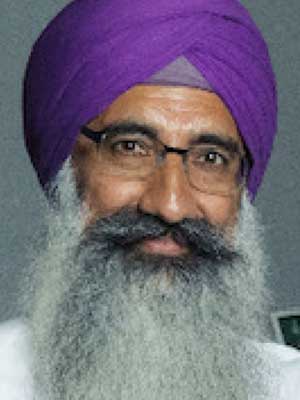
Dr. Balbinder Singh Bhogal is Professor in Religion and the holder of the Sardarni Kuljit Kaur Bindra Chair in Sikh Studies at Hofstra University, NY. He has previously, held positions at University of Derby, England, James Madison University, Virginia and York University, Toronto. His primary research interests are South Asian religions and cultures specializing in the Sikh tradition, particularly the Guru Granth Sahib, its philosophy and exegesis. Secondary research interests include: hermeneutic theory and its radicalization through deconstruction; Indian Philosophy and its relation to Continental Philosophy, Mysticism, Translation and Postcolonial Studies, and the Religion-Secular and Animal-Human divides. Selected Articles: “The Facts of Colonial Modernity & the Story of Sikhism”, Sikh Formations: Religion, Culture, Theory, 2015; “Oak Creek Killings: the Denial of a Culture of Oppression”, SOPHIA: International Journal for Philosophy of Religion, Metaphysical Theology & Ethics, 2014; “The Animal Sublime: Rethinking the Sikh Mystical Body”, Journal of the American Academy of Religion, 2012; “Decolonizations: Cleaving Gestures that Refuse the Alien Call for Identity Politics,” Religions of South Asia, 2010.
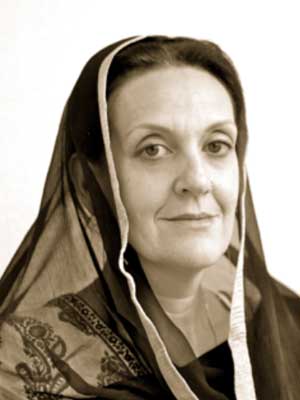
Dr. Francesca Cassio is Professor of Music at Hofstra University (NY) and since 2011 holds the Sardarni Harbans Kaur Chair in Sikh Musicology, the first academic position of its kind in the United States. M.A. and PhD in Ethnomusicology from the University ‘La Sapienza’ of Rome, in affiliation with the Benares Hindu University, Dr. Cassio has conducted extensive research in India, where she lived for several years and was trained in vocal music by renowned musicians such as Ustad Rahim Fahimuddin Khan Dagar, Prof. Ritwik Sanyal, and Dr. Girija Devi. Senior disciple of Bhai Baldeep Singh, the 13th generation exponent of Gurbani kirtan, Dr. Cassio specialized on the history and the musicological analysis of traditional Sikh repertoires. Prior to joining Hofstra, Dr. Cassio was lecturer of Ethnomusicology and Indian vocal music at the University of Trento, Conservatory of Vicenza, Conservatory of Adria (Italy), and Visiting Professor at Viswa Bharati University (Shantiniketan, India). Dr. Cassio is the author of a monograph on dhrupad titled “Percorsi della Voce. Storia e teccniche esecutive del canto dhrupad dell’India del Nord” (2000). Her essays are published in edited volumes and international academic journals, and her research interests cover several areas in the field of South Asian music, ranging from early-music history to pedagogy, music and gender, music-s of underrepresented traditions, postcolonial and decolonial studies. In 2015, she was awarded the Stessin Prize with the article “Female Voices in Gurbani Sangit and the Role of the Media in Promoting Female Kirtanie”. Accomplished dhrupad singer and kirtaniya, Dr. Cassio has lectured and performed in renowned gurdwaras and academic institutions in India, Europe and the USA.
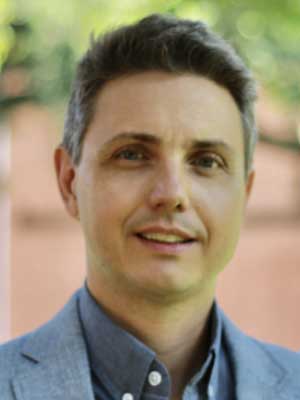
Dr. Eben Graves holds a PhD in Ethnomusicology from the University of Texas at Austin and has recently held fellowships at Yale University and Columbia University. His writings on devotional song in South Asia have appeared in the journals Ethnomusicology and the Journal of Hindu Studies, amongst other publications. His current book project focuses on connections between musical performance, devotional practice, and social time in contemporary West Bengal, and is provisionally titled The Politics of Musical Time: Expanding Songs and Shrinking Markets in Bengali Devotional Performance. He currently directs an interdisciplinary fellowship program and several research initiatives at the Yale Institute of Sacred Music. Apart from scholarship, he has studied the Bengali khol for many years, and finds time to study, teach, and perform Bengali music whenever possible.
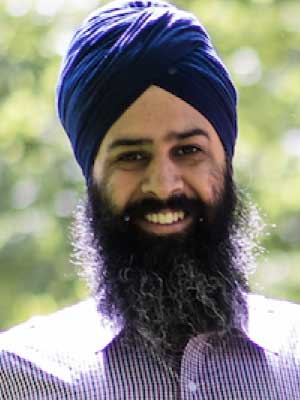
Dr. Harjeet Singh Grewal teaches Sikhism and Religious Philosophy courses in the Department of Classics and Religion at the University of Calgary. He completed his dissertation, titled “Janamsākhī: Retracing Networks of Interpretation,” at the University of Michigan in 2017. His research interests include Sikh philosophy, diaspora, and devotional literature.
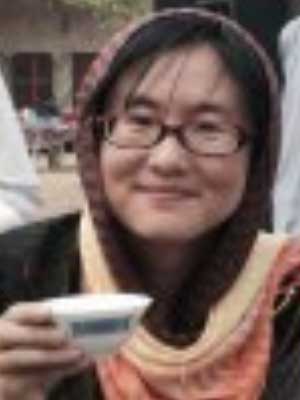
Pei-ling Huang holds a Master in Musicology from National Taiwan University, and is currently a Ph.D. candidate in ethnomusicology at Harvard University. Her dissertation focuses on the tradition of Shah Jo Rāg, performed by rāgī faqīrs at the shrine of Shah Abdul Latif Bhitai in Sindh, Pakistan. She is interested in issues of selfhood, knowledge, voice, and gender that arise in the changing contexts of Rāg performance.
Manpreet Kaur is a Doctoral Candidate in the Department of Religion at Columbia University. Her dissertation, tentatively titled A Performance History of Farid, examines the formative and interconnected roles of writing and performance practices in the emergence of multiple devotional communities in the early modern period in north India. By tracing the poetic corpus, life-narratives, and ritual performances related to a vernacular Sufi Shaikh Baba Farid (d. 1265 CE, Pakpattan), who is venerated across Dadupanthi Hindu, Chishti Muslim, and Sikh religious groups, and whose presence is recorded across the textual repositories and performance repertoires of each of these religious communities, her research shows how texts were performed before and through writing, and corpora were shaped by performances, in collaborative and corporate environments where the performative was valued as a mode of knowledge production and community formation. Methodologically speaking, this research combines the study of texts (through textual and literary criticism), the study of artefacts (through palaeography, codicology, and techniques derived from material history), and the study of performance practices (through ethnographic observation for the present, and considering humans as actors in historical scenery for the past) in order to bring into conversation objects and processes that have until now been studied in isolation.
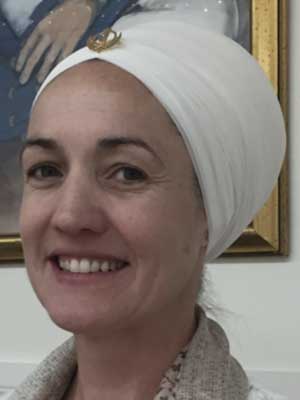
Dr. Nirinjan Kaur Khalsa-Baker is Acting Director, Masters of Yoga Studies and Instructor of Theological Studies at Loyola Marymount University in Los Angeles. From 2015-2018 she held an endowed position as Clinical Professor Sikh & Jain Studies at LMU where she taught classes on Jainism and Sikhism while organizing four major conferences, multiple lectures, and certificate programs. The papers from the first Sikh and Jain conference “Music Poetics of Devotion in Jain and Sikh Traditions” have recently been published in a special issue of Sikh Formations, in which she served as guest editor and contributor. Her work on Sikh music and identity is informed by extensive ethnographic research and her own study within the Gurbani Kirtan Parampara since 2001 with Bhai Baldeep Singh who honored her as the first female exponent of the jori-pakhawaj. Nirinjan Khalsa-Baker's scholarship explores the history, pedagogy and praxis of Sikh kirtan as detailed in her dissertation through the University of Michigan “The Renaissance of Sikh Devotional Music: Memory, Identity, Orthopraxy” (2014) and published in an article “Gurbani Kirtan Renaissance: Reviving Musical Memory, Reforming Sikh Identity” (2012). Recent publications: “When Gurbani Sings a Healthy Happy Holy Song” (2012), “Renegotiating Orthopraxy in the Presence of the Bani Guru” (2014), “The Ecology of Sikh Diasporic Feminisms: Interconnected Ethics of Seva and Sovereignty” (2018), “Engendering the Female Voice in Sikh Devotional Music: Locating Equality in Pedagogy and Praxis” (2019) and a book chapter co-authored with Francesca Cassio "Singing Dharam: Transmission of Knowledge in the Sikh Sonic Path” (2019).
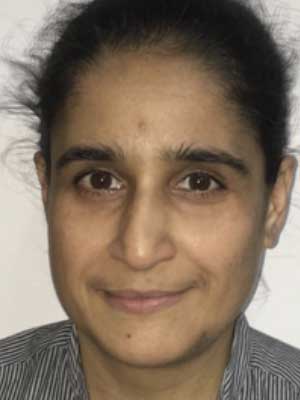
Saleema J. Khawaja is a lawyer by profession. She has been involved with learning music since the age of 7 where her main focus has been Punjabi folk. In year 2007 she started learning Gurbāṇī Saṅgīta śabadrītas (compositions) from Bhāī Ghulām Muhammad Chāṅd belonging to the Rabābī tradition and remained his student till shortly before his death in April 2015.
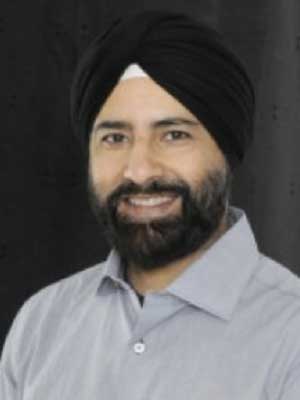
Dr. Arvind-pal Singh Mandair in 2001 I became the first holder of the S.K.K. Bindra Chair in Sikh studies. After five years in New York, I served as S.B.S.C. Endowed Chair in Sikh Studies at the University of Michigan, where I am currently based as Associate Professor of Sikh Studies. My scholarly interests are very wide. Though grounded in the study of Sikh/Punjabi/South Asian formations, my research and teaching are located at the intersections of a variety of disciplines including: cross-cultural & continental philosophy, history of religions, philosophy of religion, theories of secularism and religion, post-colonial theory, translation studies. In addition to research monographs I am founding co-editor of the journal Sikh Formations: Religion, Culture and Theory, published four times a year by Routledge, which is now a leading scholarly journal in Sikh Studies. I also served on the editorial advisory boards of Culture and Religion and Religions of South Asia.

Dr. Peter Manuel is Professor, John Jay College and the Graduate Center of the City University of New York. Peter Manuel has written extensively about popular and traditional musics of India, the Caribbean, and elsewhere. Three of his books have earned prestigious awards. An amateur sitarist, jazz pianist, and flamenco guitarist, he teaches seminars on Indian music, Latin American music, world popular music, aesthetics, and other topics. Representative publications: Tales, Tunes, and Tassa Drums: Retention and Invention in Indo-Caribbean Music. University of Illinois Press, 2015; East Indian Music in the West Indies: Tan-singing, Chutney, and the Making of Indo-Caribbean Culture. Temple University Press, 2000 (winner of the Caribbean Studies Association 2001 Gordon K. Lewis Best Book Award). Caribbean Currents: Caribbean Music from Rumba to Reggae. Temple University Press, 1995 (with Michael Largey and Ken Bilby) (winner of the Caribbean Studies Association 1996 Gordon K. Lewis Best Book Award, and “Outstanding Academic Book” award of Choice 1996) (2nd edition, 2006); Cassette Culture: Popular Music and Technology in North India. Chicago: University of Chicago Press, 1993 (also co-published by Oxford University Press – India, 2001); Essays on Cuban Music: North American and Cuban Perspectives. University Press of America (Lanham, MD), 1991; Thumri in Historical and Stylistic Perspectives. New Delhi: Motilal Banarsidass, 1989; Popular Musics of the Non-Western World: An Introductory Survey. New York: Oxford UniversityPress, 1988 (winner of an Ascap-Deems Taylor Award).
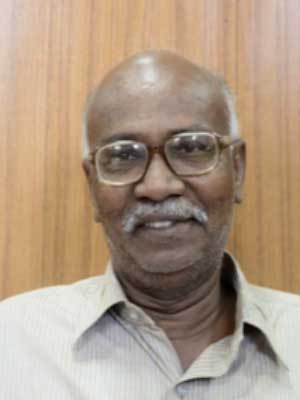
Dr. N. Muthu Mohan is M.Sc (Chemistry, Peoples’ Friendship University, Moscow, USSR, 1982) and Ph.D (The Becoming of Indian Philosophy, Moscow State University, USSR, 1987). His specialization is Sikhism, Indian Philosophy and Religious Studies. He worked as Lecturer (1987-1995), Reader (1995-2003) and Professor (2003-2013) in Guru Nanak Devji Chair and later Department of Guru Nanak Studies of Madurai Kamaraj University, Madurai, Tamil Nadu. He was also the Chairperson of the School of Religions, Philosophy and Humanist Thought, Madurai Kamaraj University, Madurai. He served as the Deputy Coordinator of the DRS-SAP-UGC (Phase I) 2002-2007 and Coordinator DRS-SAP-UGC (Phase II) 2007-2012. He was also the Deputy Coordinator for the UPE Projects for the School of Religions, Philosophy and Humanist Thought, MKU. He was a Member of Senate, Madurai Kamarai University for the period of 1995-2013. He took the Administrative responsibilities of Additional Controller of Examinations (2009-2010) and Director (2010-2011) of the Directorate of Distance Education, Madurai Kamaraj University, Madurai. He has published more than 25 books both in English and Tamil, and around hundred papers in regional, national and International journals. 5 of books are on Sikhism. He has visited USSR (Education), United Kingdom (Training in Religious Studies), Singapore and Sri Lanka for presenting papers at International Conferences. He is the recipient of Best Book and Best Article Awards from Tamil Nadu State Government, Thiruppur Tamil Sangam, Tamil Nadu Art and Literary Association and Bhai Vir Singh Sahitya Sadan, New Delhi. Presently (from November 2013), Dr. N. Muthu Mohan is serving as the Professor in the Centre on Studies in Sri Guru Granth Sahib, Guru Nanak Dev University, Amritsar, Punjab. His project at the Centre is “Writing Sikh Philosophy on its Own Terms”. He can be visited at nmuthumohan@wordpress.com for his latest articles in Tamil and English.
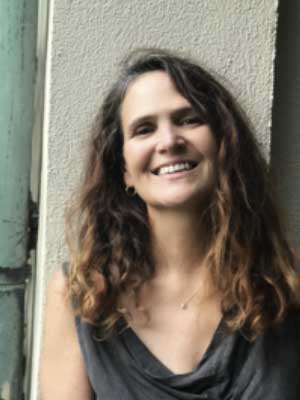
Dr. Janice Protopapas (Gurleen Kaur) is a Canadian American ethnomusicologist who specializes in research and study of Gurmat Sangeet from both theoretical and practical perspectives. As an ethnographer, musician and practitioner, and initiated Sikh, she researches Sikh music as a lived experience and as a tool of invoking and reenacting an historical consciousness. She holds a doctorate in ethnomusicology from University of Maryland along with twenty-five years of research and study in Indian classical music and Sanskrit studies from Varanasi, India. A disciple of the late Shrimati Mangala Tiwari and Dr. Gurnam Singh, she teaches Sikh devotional music as a both a musical and spiritual discipline instilling in the students the need for deep study of the shabad (The Word) as a interpersonal method of self-discovery. Deeply invested in educating the academic world about Sikh Sacred Music, she writes and presents papers at numerous academic conferences internationally on topics related to both the theoretical and practical aspects of Gurmat Sangeet. She has been to Bhaini Sahib numerous times and received blessings from Satguru Jagjit Singh for her research into both Gurmat Sangeet and Halē dā divān. Please refer to her website with details on publications and recordings: www.Janprotopapas.com
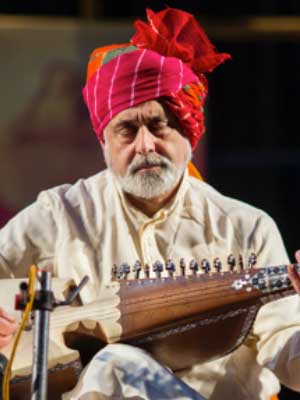
Mohammed Daud Sadozai, known as Daud Khan, was born in Kabul/Afghanistan and studied robab (a traditional lute-instrument of Afghanistan) with Ustad Muhammad Umar, the most famous rabab-interpreter of classical and traditional folklore styles in his country. Daud Khan is instrumental in preserving this authentic style of his master’s school. Daud Khan studied the North-Indian instrument sarod, which is a descendent instrument of the robab, with the great sarod Maestro Ustad Amjad Ali Khan in India. The ancestors of Amjad Ali Khan had brought the robab from Afghanistan to India and developed the sarod from it. Daud Khan is frequently performing all over Europe and participating in international music-festivals (1992-Weltfestival der Laute, Alte Oper Frankfurt, 1998-Nacht der Mogule, Staatl. Museum für Völkerkunde in München, 2002-Burgkonzert in Borgo e Rocca Meddioevale bei Rom, 2003-12° Festival Musicale del Mediterraneo –via della Seta „Seidenstrasse“-in Genua, 2003-Burgfestival Bertradaburg, 2003-Torino Settembre musica-Musikfestival Turin. USA-Tour September 2005, 2006 Festival de France etc.) He performed live in the German TV and radio-programs. In India he was honored twice with the Ustad Hafiz Ali Khan Award (1988/1995). Since 2004 Daud Khan is performing with the Ensemble Radio Kabul in concerts and festivals all over Europe and abroad. He participated in the famous Agadir Festival in Morocco and he took part in concerts with the well-known instrumentalist Jordi Savall and his ensemble. In Cologne Daud Khan is head of the Academy of Indian Music, founded by Ustad Amjad Ali Khan. There he follows his masters tradition of teaching the robab as well as the sarod. Daud Khan’s CD-recording Tribute to Afghanistan has been published and he participated in many CD-productions as instrumentalist. He also published: The voice of the mystics (Jaffar Hussain Khan-Qawwali), The soul of sound (Ustad Muhammad Umar-Robab), A world of string and sound (B.L.Sopuri-Santoor)
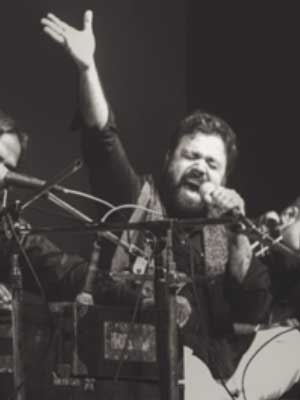
Dhruv Sangari (also known as Bilal Chishty), is a well regarded singer, lyricist, composer and savant based in Delhi, India. He leads a number of well known bands such as ‘Rooh Sufi Ensemble’, ‘Humble Mystic’ & ‘VnA’. Initially trained in Hindustani classical vocals and tabla, he later trained under several maestros including Ustad Iqbal Khan, Ustad Meraj Nizami and the legendary Ustad Nusrat Fateh Ali Khan. Dhruv is a formal initiate into the Chishty school of Sufism. Popularly called ‘Prince of Qawwali’ Dhruv has an MA in music and has several popular Bollywood, Television and Coke Studio@MTV tracks to his credit. Having performed in more than 15 countries including for HH Dalai Lama and with Maestros such as A.R. Rahman and Nitin Sawhney CBE, he has also sung in a number of albums nationally and internationally. A regular at most well known festivals, his work has been frequently covered by the media and press. Empaneled with the Festivals of India Abroad, and the Indian Council for Cultural Relations, Ministry of External Affairs, Government of India; Dhruv is a founding member of the UN recognized heritage organization, 'Ektara India'. Possessing a keen interest in scholarship on Sufi-Bhakti and syncretic themes, over the last decade he has taught, spoken and performed in a number of schools, universities and cultural organizations both within India and overseas such as the Smithsonian Institution, Johns Hopkins, Colby College, House of World Cultures Berlin, U.S. Library of Congress, New York University and Stanford University.
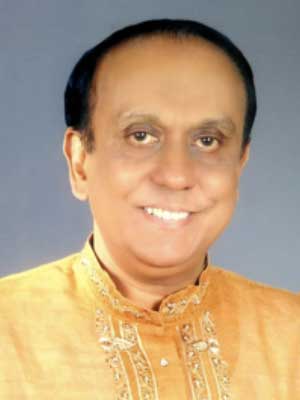
Pandit Ritwik Sanyal is an outstanding dhrupad singer, guru, professor, composer and writer. During the last 40 years, he has immensely and extensively contributed to the propagation and revival of dhrupad in almost every part of India and in around 50 countries of all the continents across the globe. This includes his performance and workshops in around 600 prestigious and prominent concert platforms and various music organizations and institutions. From grass-root levels to apex professional platforms, his untiring work and achievements in music speaks of his quality and personality. His important accolades include the prestigious Kendriya Sangeet Natak Akademi Award Delhi 2013, Uttar Pradesh Sangeet Natak Akademi Award 2002, Dhruvapad Samman Jaipur 2007, Swati Tirunal Samman for oustanding contribution to Dhrupad by Dhrupad Mela Varanasi 1995. He is a distinguished member of several well-known bodies – ICCR, HRD Ministry, All India Radio, Resource person and member of selection committees of several universities. He is ‘top’ grade artist of All India Radio/Doordarshan and is Ex-Professor of Banaras Hindu University, Varanasi. Pandit Ritwik Sanyal is author of several articles and books on Indian Music, including the renowned monograph “Dhrupad: Tradition and Performance in Indian Music” (2004), co-authored with Richard Widdess.
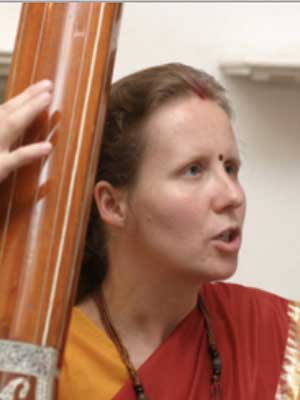
Dr. Selina Sharma is a Musicologist with postgraduate degrees from the Universities of London and Cambridge, Ph.D. from Banaras Hindu University under the guidance of renowned scholar, the late Professor Prem Lata Sharma. Vocalist of classical dhrupada and haveli sangeet styles, singer at the temple of Radharamana, Vrindaban. Numerous publications including eleven books on Indian music, philosophy and art. Senior administrator of Vraja Kala Sanskriti Sansthana, Vrindaban. Visiting lectureships, lectures and musical performances in India and abroad.
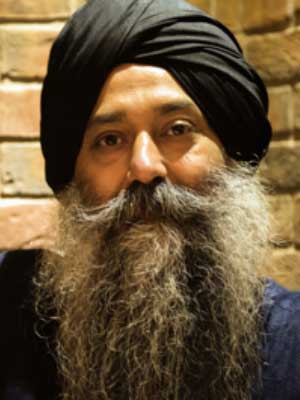
Bhai Baldeep Singh is the founding chairman of The Anād Foundation (New Delhi) and serves as Dean of the Faculty of Humanities and Religious Studies at Guru Nanak Dev University (Amritsar). In the latter 80s, a young Bhai Baldeep Singh realized that the civilizational essence of the GurSikh tradition was in real danger of extinction. This thirteenth-generation scion of a lineage blessed by Guru Nanak traveled across the Indian subcontinent and beyond to connect with the last living bearers Gurbāṇī Saṅgīta, assimilating their oral narratives and musical knowledge into a panoramic vantage and performative élan unmatched in decades. Bhai Baldeep Singh’s herculean effort to salvage GurSikh tangible and intangible heritage is responsible for the survival into the twenty-first century of the original musical masterpieces in which scripture was revealed to the GurSikh Gurus, the musical instruments and playing systems of their endowment — including the rabāba, tāūs, and jōṛī-pakhāwaj — and the indigenous pedagogical processes through which rising generations of custodians are being minted. His 2019 publications include ‘Memory and pedagogy of Gurbāṇī Saṅgīta — An autoethnographic Udāsī’, and Gurbāṇī Saṅgīta: Prācīna Kīrtī Mālā(forthcoming), a repository of over three hundred authentic compositions from the Gurbāṇī Saṅgīta tradition.
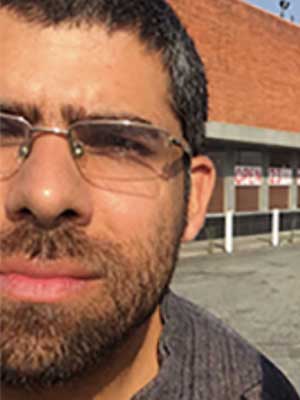
Davindar Singh is an Ethnomusicology PhD student and Presidential Scholar at Harvard University. His prior ethnographic research was among Sikh sugarcane farmers and priests in Fiji. His current research examines relationships between the respective circulations of sound, linguistic signs, commercial music, and commodities among and through Punjabi truckers over the Indo-Pak border and in North America. Other related areas of interest include Punjabi sociolinguistics, sounded architectural space, urban noise in public health discourse, and relationships between agricultural and industrial production in Punjab.
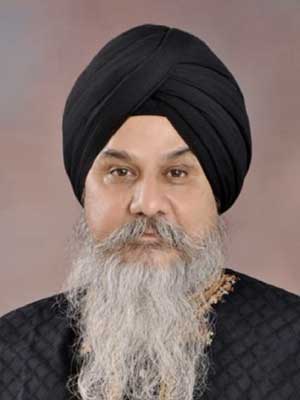
Dr. Gurnam Singh has served 36 years in various Universities of India & abroad in the field of music as founder Professor, Head and dean. For the first time in World History, Dr. Singh has recited complete 31 main Rāgas & 31 Rāgas forms (62 in total) of Sri Gurū Granth Sāhib recorded by HMV Company. Another of his major contribution relates to the revival efforts of Shabad Kīrtan with original traditional String instruments at Srī Darbār Sāhib (Golden Temple) Amritsar. Dr. Gurnam Singh has guided many students for Ph.D. and other various research projects. A large number of his disciples are actively engaged in various universities, colleges and other institutions as teacher and Kirtan performers. Dr. Gurnam Singh has authored 18 Published Books, 72 Published Research Papers, more than 200 Published Research Articles, 27 Edited Books, 3 Translated Books, 4 Documentary Films, 23 Archival Recordings, 9 Video Lectures, 26 Audio Recordings, 4 Video Recordings, 5 Documentary Films and 6 Signature Tunes. Dr. Gurnam Siṅgh has been honoured with Saṅgīt Nātak Academy Award by President of India, Shiromaṇī Rāgī Award by Shiromaṇī Gurdwārā Prabaṅdhak Committee Amritsar, State & Shiromaṇī Rāgī award from Punjāb Government and Senior Fellowship from Saṅgīt Nātak Academy, Delhi. Apart from this, Dr. Singh has founded various academic programs by developing - Gurmat Saṅgīt subject from Elementary to Ph.D. in various Universities in India & abroad, founded Gurmat Saṅgīt Chair, Department of Gurmat Saṅgīt, Bhāī Randhīr Siṅgh Online Gurmat Saṅgīt Library, Sant Sucha Singh Archives of Music, Gurmat Giān online study Centre etc. As Director he has organized more than 30 National - International Conferences, Music Concerts and Music Workshops, Gurmat Saṅgīt Darbār etc. Dr Gurnam Singh has presented more than thousands of performances since 1979 at various National-International Programs and he is still actively contributing in the field of Gurmat Saṅgīt at the global level.

Kirit James Singh. With an academic background in computing, Kirit Singh left his early career as a programmer in order to pursue both his academic and practical interests in Hindustani music in 2013. Having completed his MMus in Ethnomusicology also at SOAS University, London, he is currently undertaking his PhD there, focussing on the history of Hindustani music and Gurbānī Kīrtan in Punjab during the colonial period. Inspired by his research, he is also working on a short film highlighting the story of music among the Sikhs as part of a larger awareness program relating to Sikh musical tradition, titled ‘The Mardana Project’. He is also a student of dhrupad vocal music being a disciple of Pt. Uday Bhawalkar.
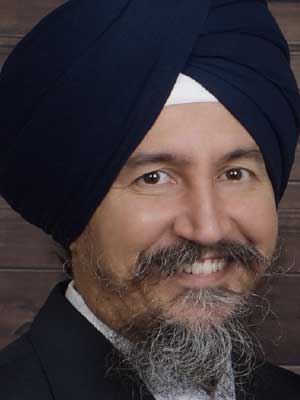
Dr. Manjit Singh is a researcher, educator, practitioner and a lover of Gurbani Kirtan. He is the founder of Nad Music Institute and serves as Director of Sikh Musicology at the Sikh Research Institute. He holds a Ph.D. in Acoustics and works as Acoustics Engineer at largest aerospace company Boeing in Seattle, Washington, USA. He has been passionately learning and teaching Gurbani Kirtan to students of all ages in USA and India for over twenty years. In 2017 he received a Masters degree in Gurmat Sangeet from Punjabi University, India. Passionate about the fine musical details contained in the Guru Granth Sahib, he is keen to bring forth their original flavor to the world through research and collaboration with experts in the field.
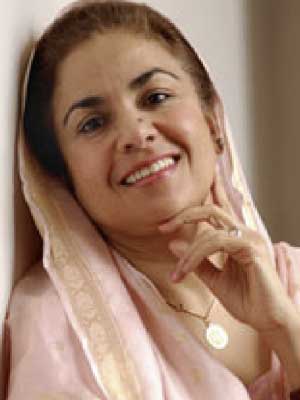
Dr. Nikky-Guninder Kaur Singh is the head of the Department of Religious Studies at Colby College, and holds the Crawford Family Professor Chair. Her interests focus on Asian Religions, feminist issues, and sacred art and poetry. Dr. Singh has published extensively in the field of Sikh studies. Her books include Of Sacred and Secular Desire: An Anthology of Lyrical Writings from the Punjab (IB Tauris 2012), Sikhism: An Introduction (IB Tauris 2011), Cosmic Symphony (Sahitya Akademy, 2008), Birth of the Khalsa (SUNY 2005), Feminine Principle in the Sikh Vision of the Transcendent (Cambridge University Press, 1993), Sikhism (Facts on File, translated into Japanese, 1993), and The Name of My Beloved (HarperCollins1995; Penguin 2001). She has authored over 100 articles and chapters, and given more than 250 lectures nationally and internationally.
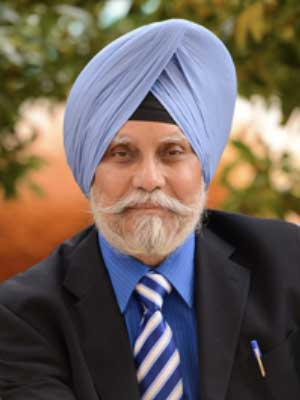
Dr. Pashaura Singh is Professor and Saini Chair in Sikh Studies at the University of California, Riverside. He is the author of four Oxford monographs. His work on the Adi Granth (sacred Sikh scripture) and early Sikh history is widely noted. His monograph, Life and Work of Guru Arjan, was on the “Best Sellers List” in India (The Tribune, August 6, 2006). His most recent monograph, A Dictionary of Sikh Studies (Oxford University Press, 2019), was launched on Oxford Quick Reference on April 15, 2019 to commemorate Guru Nanak’s 550th Birth Anniversary. In addition, he has co-edited nine volumes, including The Oxford Handbook of Sikh Studies (OUP 2014).
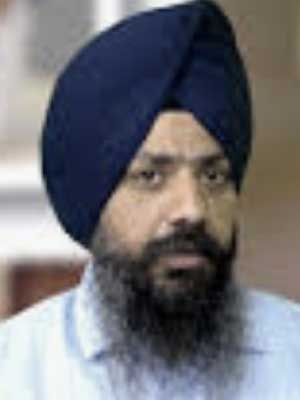
Prabhsharanbir Singh is a Doctoral candidate at the Interdisciplinary Studies Graduate Program at the University of British Columbia. His research interests include Sikh Studies, Continental Philosophy, Philosophy of Technology, and Decolonial Theory. His dissertation seeks to present a decolonial critique of modern western technology with reference to the Sikh tradition. He also teaches at the University of British Columbia.
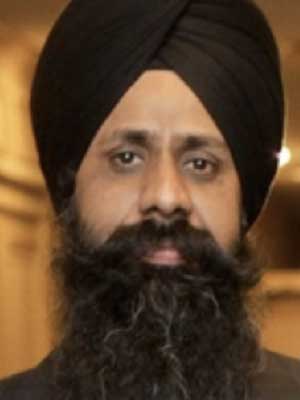
Prabhsharandeep Singh was born in Punjab, and is currently a DPhil candidate in the Faculty of Theology and Religion at the University of Oxford. His research interests include literature and religion, Sikh literature, cultural memory, aesthetics and politics, philosophy of religion, continental philosophy, and postcolonial theory. He writes poetry in Punjabi and English. His poems explore traumatic memories of violence and displacement. He is interested in (re)creating the images of violence in order to deconstruct the narratives that not only legitimize and perpetuate the acts of violence, but also coerce the victims of violence to vindicate it. His poems reveal what is beneath the violent inscriptions over the memory of a suppressed and dehumanized community.
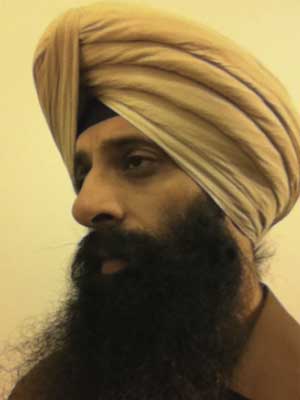
Puninder Singh is a doctoral candidate in anthropology at the University of Michigan. His current research is focused on the concepts of naam and śabad in the Sikh tradition.
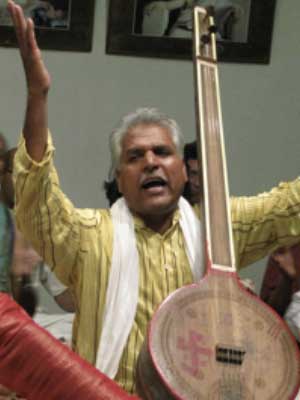
Prahlad Singh Tipanya is one of the most compelling folk voices in India today. Born in a small village in central India, he has earned international acclaim for his captivating music and the profound messages he shares through his performances. He specializes in singing and interpreting the verses of the 15th-century poet Kabir and other Indian mystical saint-poets. Every bhajan (song) Tipanya shares is a deep exploration into devotion (bhakti) and spiritual practice (yoga), all grounded within the realities of everyday life experience. For the last two decades, Tipanya has been at the forefront of a “bhajan revolution” in North India, mobilizing the words of poets and saints to help transform society. For his efforts, Tipanya has been described as “India’s voice of equality,” and has been honored by the Indian government with the prestigious Padma Shri award. More importantly, he has inspired countless listeners in India and internationally to seek inner spiritual transformation through the enchanting beauty of his music and the timeless wisdom of the mystic saints.
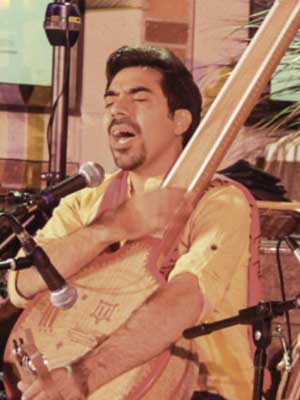
Vivek Virani’s research explores connections between music and spirituality in diverse religious and cultural traditions, with a particular focus on religious music's role in the constructions of community, nation, and self. His recent dissertation explores how songs of South Asian devotional poet-saints are used to negotiate issues of culture, religion, and society at the regional and national levels. He is currently drafting a book based on this work while pursuing further projects related to bhakti, Sufi, nirgun, and other forms of mystical poetry performance in South Asia. Vivek is also engaged in a theoretical project developing new analytical paradigms for North Indian tabla solo composition and improvisation. The Society for Asian Music recognized Vivek with the Martin D. Hatch prize for the best student paper related to Asian Music presented at the 2015 meeting of the Society for Ethnomusicology. Recently, Vivek has contributed a chapter on altered states of consciousness in classical tabla compositions to the volume Music and Consciousness 2, published by Oxford University Press, and a chapter on caste-discrimination reform through devotional published in the volume Songs of Social Protest: International Perspectives. Vivek is also a versatile performer. He regularly performs interfaith bhajan, kirtan, qawwali and other spiritual songs in a mix of traditional and contemporary styles. He has trained intensively in Hindustani classical tabla under world masters Pandit Suresh Talwalkar and Pandit Swapan Chaudhuri and is adept on many global percussion instruments. He has learned bansuri (bamboo flute) with Pandit Radha Prasad and is currently training in Dhrupad vocal under Pandit Umakant and Ramakant Gundecha. He recently contributed to the soundtrack of the Cannes festival-winning film The Cinema Travelers, in which he played 8 instruments in addition to providing vocals.

Dr. Richard K. Wolf, Professor of Music and South Asian Studies at Harvard University, has been conducting ethnomusicological research in South Asia since 1982 and Central Asia since 2012. His topics have included social-cultural “style” in South Indian classical music, conceptions of space, time and music among the Kota tribal people in the Nilgiri Hills of south India, and drumming, “recitation,” and music in public Islamic contexts in India and Pakistan. Wolf is currently preparing a monograph and an ethnographic film concerning music, language, and moral being among the Wakhi people of adjacent parts of Tajikistan, Afghanistan, Pakistan and western China. From 2012-2018 Richard held a Friedrich Wilhelm Bessel Research Award from the Alexander von Humboldt Foundation to collaborate with anthropologist Frank Heidemann in Munich on work related to the Nilgiri Hills in South India, as well as visual anthropology. In addition to writing and teaching, Wolf is also a performer on the South Indian vina. During the 2018-2019 academic year he was the Carl and Lily Pforzheimer Foundation Fellow at the National Humanities Center in Research Triangle Park, North Carolina.
Abstracts
Many into One: Gurbānī kīrtan between pluriversality, nationalism, and homologation, or
why the study of Gurbānī kīrtan is relevant to the ethnomusicology of South Asia
Dr. Francesca Cassio (Hofstra University)
Stemmed from anek deśī and mārga traditions, Gurbānī kīrtan repertoire took a distinct shape during the Sikh Gurūs’ era (late 15th - early 18th century) with a rich gamut of song-forms, rāgas, and rhythmic cycles that have yet to be acknowledged by South Asian music scholars for their historical and musicological importance. In this comparative panel discussing dhrupad-based kīrtan forms, the presenter argues how the study of heritage Gurbānī dhrupad and partāl compositions not only contributes to reconstruct the cross-pollination among local cultures in the early-modern era, but also exposes the colonially-derived epistemic ground that had an impact on Post-Partition scholarship and, ultimately, on the preservation of “little” indigenous knowledges (Redfield and Singer 1954, Powers 1980). Over the last seventy years, the assimilating forces of nationalism and globalization affected the heterogeneity of South Asian music cultures endorsing, through the Media and institutionalized education, the use of stereotyped sonic models and monolithic categories (i.e. classical and folk, sacred and secular) to frame local traditions. While Gurū Nānak’s kīrtan celebrated pluriversality (Mignolo and Walsh 2018) as a value using anek literatures and musical languages resonating within his inclusive one, the twenty-first century renditions of Sikh kīrtan have become the epitome of homologation to sonic paradigms of a very different (neocolonial, nationalist and exclusive) “one”. At the verge of disappearing, the Gur-Sikh heritage repertoire, still carries the distinct Gurbānī signature which speaks of pluriversality, and as such urges scholars to recall and include a pre-colonial history that survives orally and empowers multiple memories (Rothberg 2009) of indigenous knowledges. Encompassing the notion of ‘theorizing the local’ (Wolf 2009), the approach taken here orientates towards a decolonization and de-nationalization of Guru Nanak’s ek-anek musical vision, that in turn reveals the necessity to radically rethink the ethnomusicological reading of underrepresented cultures of South Asia.
Synchronies of Musical Sound: Studying Connections between Duration and Visualization in Bengali Devotional Song
Dr. Eben Graves (Yale University)
Research on devotional musics in South Asia has focused on the religious, social and political meanings expressed in song texts. However, what has often escaped attention is how aspects of musical form and style create and transform features of devotional thought and practice. Using the analytic lens of synchronies of musical sound, this paper considers relationships between temporal aspects of musical form and time-related dimensions of devotional practice in Bengal with a focus on temporal duration. Through the case of the devotional song genre of Bengali padabali kirtan, and its suggested historical links with Dhrupad, I specifically consider how musicians act on time (Born 2015) through the connections made between musical time and features of devotional practice. The synchrony of musical sound I study in this paper makes connections between temporal duration in the linked spheres of musical style and processes of meditation. I focus on the long-duration musical style used in padabali kirtan that features slow tempos and large meters (tals) in performance. Referred to colloquially as large-meter kirtan (boro-tal kirtan) this style provides a time frame that privileges temporal duration, thus exhibiting a link with the durational parameters used in processes of meditation and visualization. A final discussion in this paper considers the relative lack of attention paid towards ragas (melody types) amongst performers of padabali kirtan in performance. In the context of this panel and conference, this paper seeks to compare and contrast the purported connections between Dhrupad and devotional song in Bengal, a relationship that is clearly articulated by musicians, yet has received little critical reflection in academic discourse.
Guru Nanak: Allegories of Oneness
Dr. Harjeet Singh Grewal (University of Calgary)
This paper explores the relationship between allegorical thinking and Guru Nanak’s idea of Oneness. All ten of the Sikh Gurus were involved in privileging a singular cosmic and ontic vision to which all humans have access. The ability or inability to retain this ontic focus is what was problematized by the Sikh Gurus beginning with Nanak. In order to maintain an openness to all for truthful action, the Gurus critiqued totalizing forms of ratiocinated, or calculated syllogistic thinking. Oneness had important implication in maintaining an ethic and politics that was beholden to all people without consideration of religion, caste, class, race, and other forms of differentiation. It is often forgotten today that this places Nanak amongst earlier carriers of true knowledge, or Arifeen -individuals whose impact is often rendered inert in universal colonizer thought using the term (Sufi) mystics. The significance of Guru Nanak, both today and during his lifetime, is his ability to enable everyday language (bhakha) to convey the knowledge of Oneness effectively. Thus, the question of Oneness is connected to how language is and the relationship between language use and existentiality. I argue that Guru Nanak vivified bhakha with the light of Oneness through use of allegory to make visible the invisible, or the intangible appears tangible. This is how eka-anek (One-unOne) enters everyday language and is depersonalized to positions itself outside the relationship ambit of dual-nondual logos. Eka-anek moves knowledge to a plane that open expansive without being concerned about difference. This implies that pluralism can be considered without ratiocination and avoid relativistic ambiguous assertions. Eka-anek is an allegorical poiesis which bring that which is not-formed but is all-forming (nirankār) into formation (ākār).
Shah Jo Rāg within circulations of devotional poetry and musical labor
Pei-ling Huang (Harvard University)
In this paper I focus on Shah Jo Rāg to consider the circulations of poetic texts and traveling musicians who contributed their musical labor and knowledge in organizing and performing the poetry of religious renunciants. This repertoire, consisting mainly of poetry by eighteenth-century Sindhi saint Shah Abdul Latif Bhitai, is orally transmitted by rāgī faqīrs at his shrine. It offers insights into the eclectic and interconnected practices that consolidated a wide range of poetry and melodic idioms into this devotional tradition. In Shāh Jo Rāg, faqīrs perform chapters of verses organized according to Surs, which adhere to a topical theme and set of melodic rules. I present preliminary thoughts on two avenues for exploring the circulations that shaped this repertoire: in the non-Sindhi Surs that faqīrs transmit, and in Surs that share names with rāgas in other courtly and regional traditions. First, rāgī faqīrs today perform Surs Hindī Burvo, Hīr, and Ḍhol Māru’ī, which are excluded from published versions of Shah Latif”s Risalo (poetry collection). These Surs, while not by Shah Latif, contain dohās by Kabir, Guru Nanak, Dadu, and verses composed in Dhatki and the Sialkoti dialect by unknown poets, hinting at extensive cross-regional travels. Second, Kalyāṇ and Soraṭh are Surs sung by faqīrs as well as rāgas used for compiling the Sri Guru Granth Sahib and Pañc-vāṇi. I will analyze the melodic rules for performing these Surs to offer points of comparison for scholars working on the musical traditions of Guru Nanak and other devotional poets.
Burnishing devotion in song: the conversation between Baba Nanak and Sheikh Farid
Manpreet Kaur (Columbia University)
The paper is invested in understanding how we might use the modern material archive to study the performance pasts of devotional song texts. Scriptural and devotional texts in early modern vernacular north India are widely believed, by scholars, practitioners, and believers alike, to have been composed and transmitted in ‘oral’ performance environments. The Sikh scriptural and literary corpus is exemplary in this regard— not only does it center the oral/ aural experience in devotional practice, it also makes up one of the richest material repositories in this period through which this question can be adequately studied. Thus, through the Sikh example, we can understand how the authority of textual material and the history of their transmission interfaced with the sonic lives of those texts. In this paper,
I take the example of the janamsākhi literature, and suggest that its composers and compilers were, in recording the life of the Guru, also committing to writing the earliest moments of composing, collecting, and anthologising what came to be the sacred corpus of the Sikhs. The paper will focus on the exchanges between Baba Nanak and Sheikh Farid from various extant janamsakhi recensions. I will stress two aspects of this narrative genre in my presentation—dialogue and music—and discuss how these two are instrumental to how Guru’s bani was imagined as having been uttered for the first time, as well as how it travelled far and wide in the Guru’s own life-time. I will also share examples from visual art that complement this picture of a dialogic music-filled devotional environment. In my approach, I suggest that the study of janamsakhi literature as vernacular histories also requires paying attention to the specific generic conventions of this form and its place within the Sikh tradition.
The Epistemic Ecology of the Guru’s Vidya and the Resilience of the Gurbani Kirtan Parampara
Dr. Nirinjan Khalsa-Baker (Loyola Marymount University)
In line with this conference’s theme to honor the Ek-Anek message of Guru Nanak, this paper will explore the ways in which the sonic path of Guru Nanak offers an embodied experience of the Guru’s vidya that transforms subjectivity toward a state of being both sovereign and deeply interconnected with all others. The enlightening knowledge of the Guru’s vidya, rooted in Gurbani, is expressed and experienced through various linguistic, philosophical, pedagogic, performative, ritual and musical modes, comprising an “ecology of knowledges” (Boventura de Sausa Santos) that are at the same time uniquely sovereign and interconnected. A lifeline at the heart of this epistemological ecology (Code 2006) is the Gurbani Kirtan parampara, which has transmitted the Guru’s vidya over generations since the Sikh Guru Era (1469-1708). However, over the last century, this knowledge stream reached near-extinction due to British colonization and a focus on nationalist identity politics. The loss of performative and musical memory spurred a critical renaissance in the late 1980s to recover the remnants of Sikh’s intangible knowledge contained in the musical heritage. This paper will utilize my ethnographic research on the contemporary revival of pre-colonial Gurbani Kirtan to demonstrate how divergent pedagogic approaches are affecting how Sikh thought and identity are being transmitted today. This research reveals: 1) reformist attempts to institutionalize and homogenize “classical” Gurmat Sangeet into a normative standard through the erasure of diverse practices, much like colonial-era religious reform; 2) nostalgic attempts to revive an ancient musico-aesthetic purity through the appropriation of “tradition” and creation of new histories; and 3) the resilience the Gurbani Kirtan paramapara to sustain pre-colonial knowledge, memory, pedagogy and practice that resists colonial and national attempts to homogenize, fossilize and appropriate Sikh (musical) identity. This paper will argue that the orally-transmitted knowledge of the Gurbani Kirtan parampara can thus be understood as an “uncolonized” sovereign (Ek) living system of knowledge that at the same time is interconnected with other epistemic ecologies (Anek).
Ik Bābā Akāl Rūpa Dūjā Rabābī Mardānā
Saleema J. Khawaja (University of Lahore)
The presenter will share select Gurbāṇī Saṅgīta śabadrītas (compositions) that she studied from Bhāī Ghulām Muhammad ‘Chāṅd’, son of Rabābī Bhāī Suṅdar of Darbār Sāhib, Amritsar, and nephew of Bhāī Chāṅd, and who was among Pakistan’s last exponents of the Rabābī tradition. Though she is not trained in the specifics of the GurSikh traditions, she will look closely at the pedagogy she underwent as she learnt śabadrītas of the Gurbāṇī Saṅgīta tradition. Most Rabābī exponents from Darbār Sahib, Khadoor Sahib and Tarn Taran had migrated to Lahore when India was partitioned in 1947 and only occasionally performed when the Gurudwaras in Pakistan were opened to the public when they converged to celebrate anniversaries of the Gurus. The presentation, based on the limited repertoire she was able to harness, will attempt to discover the kīrtan paramparā as it existed before 1947 and as remembered by the last Rabābī exponents in spite of being separated from Gurudwaras where they traditionally performed for centuries.
Gurbani Sangit and the Intermediate Sphere in North Indian Music
Dr. Peter Manuel (John Jay College & Graduate Center of the CUNY)
Gurbani sangit can be seen as a constituent of what I, in an earlier publication, called the “intermediate sphere,” comprising a set of regional music genres which exhibit features of both of classical music and folk music, or which comprise regional variants of Hindustani music. Francesca Cassio, in a contemporary article, explored the historical relationships between gurbani sangit, haveli sangit, and concert dhrupad. In this presentation I seek to further contextualize gurbani sangit by discussing how its repertoire of ragas contains archaisms, and also affinities with the raga repertoire of other genres, including dhrupad family variants (including haveli sangit, and Assamese bor git), and specifically western Indian modal repertoires found in regional Hindustani music, , and Rajasthani Langa and Manganhar music, and Sindhi Shah Jo Rag (to be elucidated further by Pei-Ling Huang).
Guru Nanak Dev’s Ek-Anek Vision
Dr. Muthu Mohan (Madurai Kamaraj University, Madurai)
The theme of One and many is very old to India and we find its earliest discussion in Jaina’s Anekantavada and Vedanta;s Ekantavada. The latter contributes to the making of a metaphysical oneness which evidences the impossibility of Oneness at the social empirical realm. Consequently, the varna or caste system was proposed for the temporal life. Jaina’s Anekantavada along with its Syadvada and Nayavada established the conception of multiplicity adequately and lucidly, extending the theme to concepts such as ahimsa, tolerance etc. The second part of the story starts from the mid-medieval period, along with the new mystic poets Ravidas, Kabir and Guru Nanak. Now the ideas of Ek and Anek reoccur with the comprehensive meaning of oneness and equality. The realms perceived are both temporal and metaphysical without any division, in their unity. It was a post-medieval thought choosing music as its aesthetic mode of communication. It organically and passionately celebrates the endless variety of differences. While the uncompromising straight line represents the human ego (haumein), the curved lines mean the dialectical and the musical. It is the community, the Guru visualized to construct. It was a new beginning.
Sikh Performance of Memory: Chauṇkī Charhnī at Dārbār Sāhib
Dr. Janice Protopapas (Independent Researcher)
Congregational hymn singing has played a vital role in the formation, cultivation and persistence of the Sikh identity amidst a 400-year-old history of persecution, formation and migration. Throughout Sikh history, walking processionals of hymn singing have served as popular and pervasive ways through which the congregation could celebrate, protest, and remember. One of the oldest and most enduring processionals is the Chalna Chauṇkī conducted at the Dārbār Sāhib, Amritsar. This hour- long hymn singing service commemorates the seven-year incarceration of sixth Sikh Gurū, Hargobind at Gwalior Fort (1612- 1619). Performed daily, an ensemble of Sikh devotees chant a repertoire of hymns as they circumambulate the temple and sacred tank invoking the memory of this historical moment, demonstrating the powerful role of communal song not only a medium of protest but as a method of inculcating historical consciousness. This paper explores the musical, textual, and performance features of the lay-led processional hymn singing services at Dārbār Sāhib as performances of memory, examining how memory is musically and textually encoded in this service and the methods used for retrieval. Embodied through the ritual of lay-led hymn singing, this ceremony acts as a daily "re-membering" of an inherited memory through a complex musical and rhythmical performance of jyotian di kirtan style hymn singing. Based on current ethnographic research, including interviews and audio-video recordings, the author explores how the walking processional acts as a mode of transmitting a historical consciousness, arousing emotions that re-enact the past events, bringing them into the present moment. Like the minute hand on a clock, the ensembles rhythmical steps demonstrate the persistence of memory over time.
Oneness within variety: the confluence of poetry, music, devotional theatre and
fine art in the sāñjhī festival of Vraja
Dr. Selina Sharma (Vraja Kala Sanskriti Sansthana)
Art forms in India trace their common origin to the liturgical tradition of the ancient Hindu temples. Be it music, dance, theatre, or the various manifestations of visual art, they all emerged from the ritual practice, and even today the forms of devotional art exist in convergence rather than as separate entities, tied together by the bond of their functionality within the larger liturgical frame.
In the devotional tradition of Vraja, one of India’s foremost pilgrimage centers and birthplace of Lord Krishna, the confluence of literature, visual and performing arts is best observed in the festival of sāñjhī. A tradition rooted in folk mythology, sāñjhī was introduced into the Vaiṣṇava temples during the 15th/16th centuries where it developed into a highly sophisticated classical art. The festival of sāñjhy is centered around a visual design similar to the maṇḍala or mystic diagram of ancient Hindu and Buddhist ritual practice. In the Vraja tradition, the sāñjhī theme is interwoven with Krishnaite mythology, and the episodes relating to Lord Krishna, Rādhā and their friends celebrating the rural sāñjhī rites is eloquently narrated in mediaeval Vrajabhāṣā poetry which is sung in the styles of samājagāyana and havelī kīrtana at the time when the sāñjhī design is displayed and ritually worshiped in the temples. What is more, the entire narrative is enacted in the sāñjhī līlā plays of the rāsalīlā, the characteristic devotional theatre from Vraja which combines poetry, song, dance, narrative and drama along with – in the sāñjhī līlā – the display of a sāñjhī design on stage.
The present paper examines the aspects of music, poetry, dance and devotional theatre as part of a tradition of visual art, focusing thereby on the aspect of oneness within the variety of arts, which is defined by their ritual functionality. A brief mention will moreover be made of recent efforts to revive the unique tradition of sāñjhī, which is currently on the verge of extinction.
Anēka gavaiyyēēka gurbāṇī
Bhai Baldeep Singh
(Dean, Faculty of Humanities and Religious Studies, GNDU, and The Anād Foundation)
Gurū Nānak’s voice would have been enough, yet in his pōtthī he reserved pages for his past, present, and future to calligraph themselves. Just ēka (one) language, Pañjābī—Gurū Nānak’s mother tongue—would have been enough, yet his pōtthī contains anēka (over two dozen) languages and nearly 120 dialects, proving revelation and wisdom are not synonymous with one language or one ethnicity. Ēka poetic form would have been enough to say the ineffable for Guru Nānak, yet his pōtthī contains anēka poetic forms and rāgas. Gurū Bābā Nānak sang in ēka and anēka swarās. I understand the vision of the Gurū Bābā to also include the Sufī and Bhagatī Mārga voices, the genuine seekers from all faiths, denying exclusivism in and beyond GurSikhi.
Gurbani and the Aural Kinesthetics of Place in Sikh Fiji
Davindar Singh (Harvard University)
Following religious and ethnic persecution, including genocidal riots over land and capital, much of Fijian Sikh life is intentionally isolated. This self-containment is not a fixed condition, but rather is continually produced through signs of recognition that directly mark people and places as Sikh, and signs of avoidance that indirectly mark others as non-Sikh. Yet as Sikh and non-Sikh environments can intrude upon one another, thus too can signs of Sikhism or signs of alterity become intertwined. This paper outlines the role of Gurbani in making Fijian places feel Sikh — homes, Gurdwaras, farms — and of challenges to the production of this feeling. These challenges include historical anti-Sikh violence and the material cost of Gurbani recitation — Granthis have to be imported, even as the Sikh population dwindles in numbers and resources. To trace the extent of these challenges, I examine the relative portability of signs of Fijian Sikhism: how Sikhs move their bodies, how far Gurbani can spread in its surrounding environment, and how Sikhs relate to this environment through Gurbani. Building on recent sociology of interpretive meaning (Glaeser 2011), I trace the physical mobilities and constraints of Sikhs and Sikh practices in a seemingly hostile environment, and show that these mobilities and constraints cohere in the discourse and emotions of Sikh practices. I show that Sikh negotiation of adversity in sound and motion indicates a broader fact of sociality: it is by their mutually co-constitutive signs that we see how discourse, emotion, and kinesthetics are interwoven.
Gurmat Saṅgīt Rāga Tradition and it's Concurrent Challenges
Dr. Gurnam Singh (Panjabi University, Patiala)
In Sikhism, the Sikh Gurūs developed shabad kīrtan tradition for the communication of their spiritual message, which is a unique musical way of devotion. In context to the compatibility between the eternity of divine bāṇī and rāga, the founder of Sikhism Gurū Nānak composed his divine verse in various rāgas of classical, folk, regional and ethnic origin. The successor Sikh Gurūs followed this tradition. The hymns of other Saints and devotees composed in various rāgas also has been compiled in Srī Gurū Granth Sāhib.
A specific rāga based music arrangement has been inscribed in Srī Gurū Granth Sāhib for the musical presentation of Gurbāṇī. Some special characteristics also have been described for shabad kīrtan in the code of Sikh conduct and convention. The tradition set and developed by the Sikh Gurūs and this art of shabad kīrtan is known as Gurmat Sangīt. In the present which has been developed into an independent academic field.
In Gurmat Sangīt 31 rāgas and 31 rāga forms prescribed in Srī Gurū Granth Sāhib, 19 rāgas in Dasam Granth and 212 rāgas prescribed in Sarabloh Granth are great melodies of this tradition. Right from the Gurū's period, a large number of shabad kīrtan compositions have been passed over through generations of Kīrtankārs, which is a valuable treasure of the Sikhs. A series of compiled publications is also available in Gurmat Sangīt literature. Proudly we have been able to collect from the last almost 100 years treasure of about 7700 rāga based shabad kīrtan composiotns of Rāgīs, Rabābī and Taksālī Kīrtankārs published in 59 various prominent compilations produced by 20 scholars different scholars of this field.
In the present context, this rāga based tradition of Gurbāṇī is facing serious challenges from the contemporary one Gurmat rāga based shabad kīrtan of Gurbāṇī in a popular style. The ignorance in practicing the prescribed rāga tradition of Srī Gurū Granth Sāhib is a major reason behind this grave situation. Unfortunately most of the contemporary shabad kīrtan compositions are being composed under the influence of popular Gīt, Ġazal, film or Sufi style of music. Amongst the contemporary Kīrtankārs instead of the great legendary Sikh Kīrtankārs, role models for them have shifted to some contemporary popular singers of other music traditions.
There is a big erosion of rāgas in shabad kīrtan chaukī system while performing various rāga based segments. The essence and originality of authentic shabad kīrtan Aṅg / style is continuously missing. Obviously, it might result into losing the recognition and identification of the rich melodic rāga tradition, which would be a great loss to the coming generations. In the times to come, it will be very difficult to fill the conflict between theory and practice of shabad kīrtan preached and taught by Sikh Gurūs. The theoretical and practical foundation of Gurmat Sangīt that has been elaborated through the decades of hard work and toil, demands a serious concern and attention.
In the present context, it is utmost important to implement musicological arrangement of Srī Gurū Granth Sāhib and shabad kīrtan chaukī tradition according to the code of Sikh conduct and conventions (Sikh Rahit Maryādā) in its true and authentic spirit.
Following the originality of the authentic rāgas, proper voice culture and correct information of rāga system with String instruments during the academic training is essentially indispensable in the syllabi. At this stage for the training of string instruments rather than frequent use of Harmonium will help in this direction.
Regarding this an audio visual and music notation based archives of authentic traditional rāga based shabad kīrtan compositions is also required. Along with this constant organisations of Gurmat Sangīt performances amongst Sikh masses and Sikh youth at every level will create an audience to appreciate the real rāga based tradition. Such conscious efforts only will be helpful for the preservation of rich intangible rāga heritage of Gurmat Sangīt for our successors.
Srī Akāl Takhat Sāhib and other Sikh organisations like Shiromaṇī Gurdwārā Prabaṅdhak Committee Amritsar should implement tradition of rāga based shabad kīrtan in the true spirit .This will definitely manifest the unique identity of Gurmat Sangīt and and legacy of Sikh music at global level.
The Early Twentieth Century Origins of Gurmat Sangīt
Kirit James Singh (London University, SOAS)
Gurmat Sangīt, today, is a term which has gained currency in reference to Sikh sacred music, or Gurbānī Kīrtan, when performed in accordance with the rāgs mentioned in the Guru Granth Sahib, using traditional instruments. As the existing scholarship has shown, this is due to the appropriation of the term, in the late twentieth century, by reformists who have attempted to standardise and institutionalise ‘Sikh music’. In this paper, however, I trace the origins of this term to the early twentieth century, demonstrating how the idea of a distinct ‘Sikh music’ initially arose due to its affinity with the causes of the Singh Sabha religious reform movement, i.e., Sikh identity (re)formation and Sikh education. I show how the development of early Gurmat Sangīt was fuelled particularly by the patronage of Maharaja Bhupinder Singh of Patiala; an important music patron and a rising Sikh leader of this period. It was his patronage which led to the publishing of one of the seminal works on Gurmat Sangīt; the Gurmat Ratan Sangīt Bhanḍār (1922) by Bhai Prem Singh Ragi. By analysing this work, along with similar works of this period, I explore the extent to which early Gurmat Sangīt was also influenced by the reform of Hindustani music and, in particular, the ideology of V. D. Paluskar. Being a product of this transitional period, and combining both reformist and traditional elements, I show how this early idea of Gurmat Sangīt was far removed from the institutionalised notion of ‘Sikh music’ associated with the term today.
Three Kirtan experts answer questions on Kirtan
Manjit Singh (Independent Researcher, SikhRI)
For the development of an online Kirtan course Introduction to Sabad Kirtan, three distinct experts of Sikh Kirtan were interviewed. Prof. Kartar Singh (Gurmat Sangeet Academy, Anandpur Sahib, India), Principal Sukhwant Singh (Baba Sucha Singh Gurmat Sangeet Academy, Jandiala Guru, Amritsar, India) and Bhai Kultar Singh (Hazuri Ragi Gurduara Bangla Sahib and Sis Ganj Sahib, New Delhi, India) answered a wide range of questions from simple definitions of Kirtan to its relation with Anhad Sangit (unstruck music). The paper will compare and contrast their responses based on their stances and repertoires. The paper will also, highlight similarities in their responses in light of their training and their current practices.
Dhadhi Nanak’s Pluriversal Sonics
Dr. Nikky-Guninder Kaur Singh (Colby College, Maine)
Guru Nanak frequently refers to himself as a dhadhi in Var Majh. What was the appeal of this group of wandering singers for the Guru? What is the dynamic process of the dhadhi aesthetic launched by him? My paper analyzes metaphysical instruments, an infinite orchestra, and the universal conductor who leads dhadi Nanak’s pluriversal sonics.
Guru Nanak’s Vision of Ek-Anek in the Context of Religious Pluralism
Dr. Pashaura Singh (University of California, Riverside)
This presentation will look at Guru Nanak’s vision of Ek-Anek (“One-Many”) with respect to the inclusion of Bhagat Bani (“Utterances of the Devotees”, works of 15 medieval poet-saints of North India) in the Guru Granth Sahib, the foundational text of the Sikh tradition. In the ‘one world’ of today the various religious traditions are consciously interacting with each other in mutual observations and dialogue. Religious pluralism reflects the situation of the simultaneous existence in a single social arena of a number of different worldviews that are considered incompatible with one another. It has always been a fact of life but its awareness has become more evident in recent times than before as a result of the process of globalization. In the early decades of sixteenth century Guru Nanak encountered diverse religious traditions of Hindu, Muslim and Nath origins. He was strongly opposed to an exclusive claim that a particular tradition might make to possess the sole religious truth. Indeed, the spirit of accommodation had always been an integral part of his attitude towards other traditions. He acknowledged the usage of different names of God across religious boundaries.
A Dialogue on the Ideal Orientation to Revelation in the banī of
Sheikh Farīd and Guru Nanak
Puninder Singh (University of Michigan)
Guru Nanak’s encounter with the banī of Sheikh Farīd as preserved in Guru Granth Sahib exemplifies the pluriversal nature of the Sikh tradition. Revelation in the Sikh tradition has not been singular, an event that occurs at only one time and one place, but rather a continual unfolding of sat, truth, taking on a variety of forms and semiotic resonances; verbal, symbolic, metaphorical, musical. The story of Guru Nanak’s interaction with Sheikh Farīd’s banī is well known in the Sikh tradition; visiting Pakpattan on one of his udaasis, or travels, he became acquainted with the kalaam of Sheikh Farīd through his spiritual descendants, and took it upon himself to preserve the body of work that he recognized as a revelation of the spirit of śabad, or True Word. He, as well as some of the subsequent Sikh Gurus, interspersed their own banī within the collected ślokas of Sheikh Farīd, engendering a new, dialogic experience of śabad, a single truth that can be expressed in a myriad of forms; ek-anek. Guru Nanak’s various journeys, physical, metaphorical, ideational, poetic, serve to illustrate that, from the Sikh perspective, truth is not limited by time, language, or tradition, but rather, it is the cultivation of a particular orientation to hearing truth that allow one to experience revelation. The cultivation of this orientation is one of the primary subjects of Farīd’s banī, and Guru Nanak, in his dialogic response, expands upon this topic in outlining his own concept of the gurmukh. Guru Nanak’s understanding and engagement with Farīd’s banī provides us with a model of the pluriversal Sikh approach to receiving revelation; recognizing and understanding truth wherever and in whatever form it appears.
“Boundless Waves Arise in My Body”: Diverse Spiritual Interpretations through
Diverse Musical Experiences
Dr. Vivek Virani (University of Texas)
A central theme in Kabir poetry is the futility of searches for Truth centered on the written word. The khabar (message), Kabir says, can only be discovered through one’s own inner experience. Yet scholars, even when we encounter Kabir through living musical traditions, often reduce those traditions to texts for analysis. Even though most singer’s of Kabir’s vāṇī(voice, word) emphasize the centrality of the poetic text, my ethnographic research suggests that seekers’ musical experiences play a crucial role in their understanding and personal implementation of the poetry. Different musical treatments and environments may reinforce or emphasize different concepts or principles of Kabir’s poetry and implicitly suggest different behavioral responses.
This paper, drawing on my ethnography of Kabir poetry sung in diverse musical genres and socioreligious environments as well as my own experience as a participant in spiritual music, analyzes how diverse musical manifestations may facilitate diverse philosophical and practical interpretations. The analysis is not limited to musical sound, but also considers sociality, power hierarchies, emotive frameworks, ritual framing, and other phenomenological aspects of the musical event. I argue that all of these elements contribute to participants’ understanding of core concepts of Self, Divinity, interiority, alterity, and purpose. I further suggest that diverse musical approaches may be not only beneficial, but necessary to study and appreciate the breadth of the teachings of the Gurus and Sants.